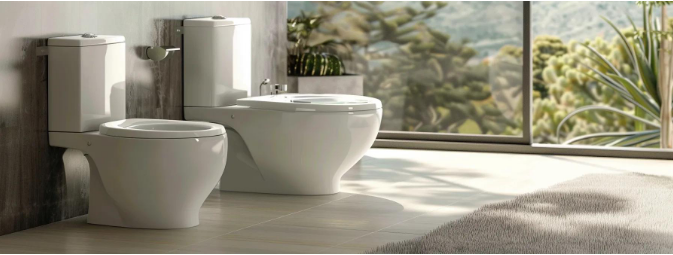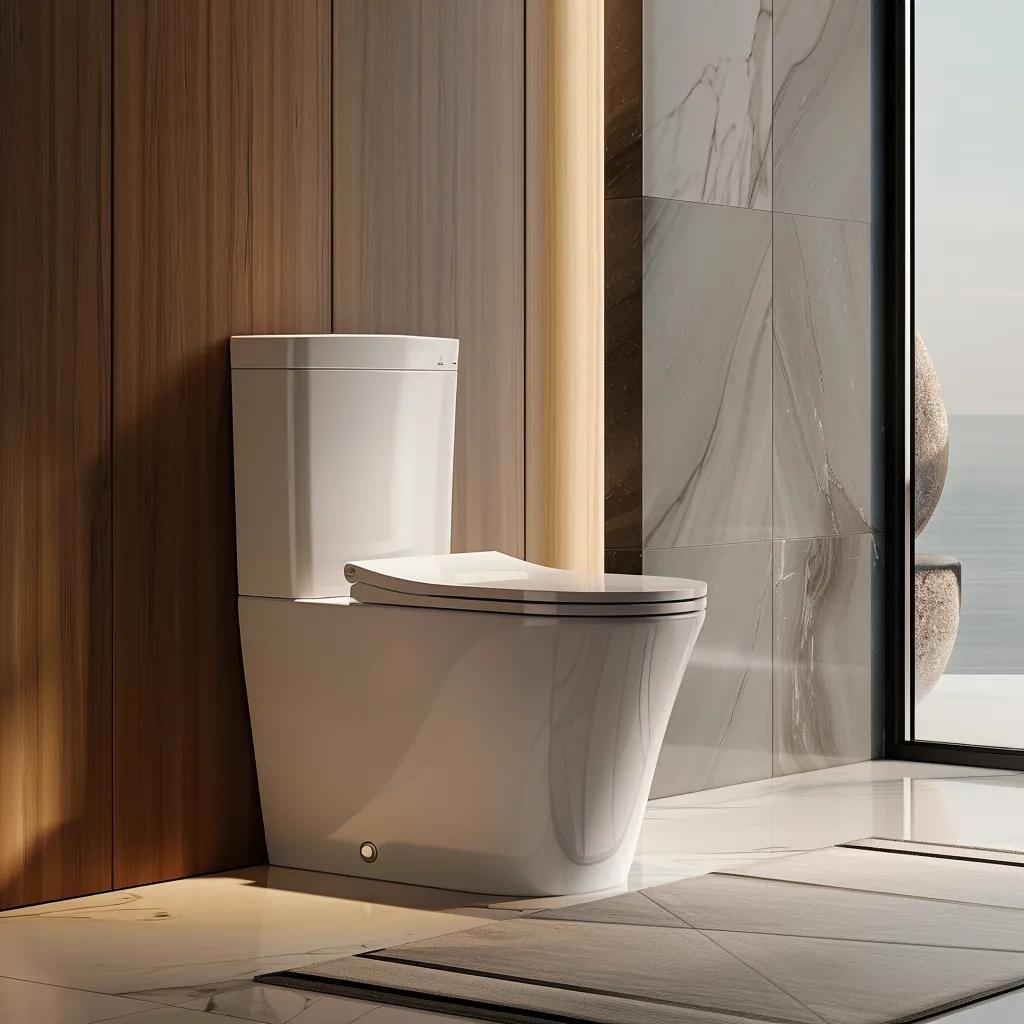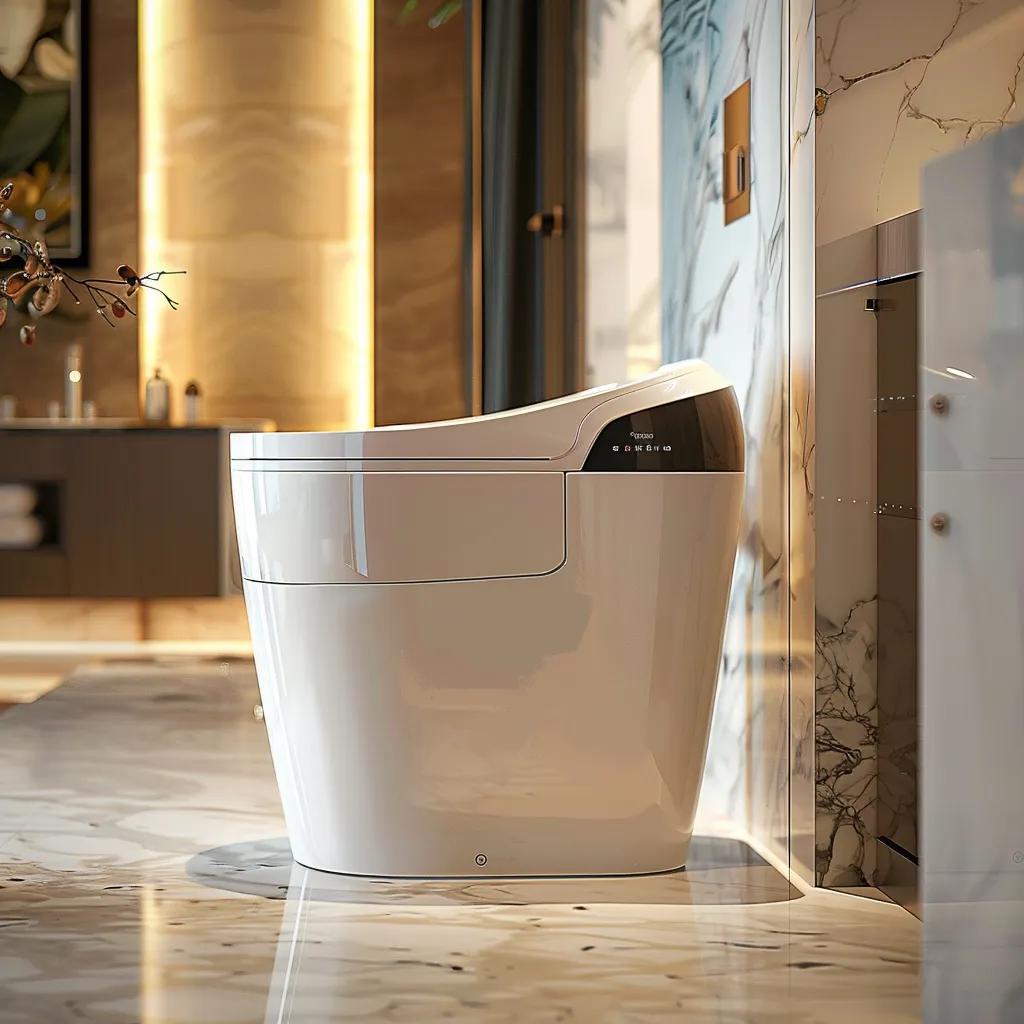
7 Different Types of Toilets in Australia
Choosing the ideal toilet for your Australian home demands more than style and it requires understanding plumbing configurations, water efficiency ratings, and installation intricacies. In this expert guide, Mitchel Plumbing and Gas unpacks seven distinct toilet types, clarifies pan and trap variations, explores water-saving options, highlights design and comfort features, and details installation and maintenance considerations. We’ll also recommend top brands and show how our professional services ensure compliance and peak performance.
In the sections ahead, you will discover:
- The seven most common toilet types in Australia and why each excels in specific scenarios
- How pan styles and trap configurations influence installation and bathroom layout
- The impact of WELS ratings and dual-flush technology on water conservation
- Key design and comfort features that enhance hygiene and user experience
- Installation challenges, maintenance tips, and compliance with Australian standards
- Leading toilet brands, models, and warranty considerations
- How Mitchel Plumbing and Gas guides you from selection through professional installation
Together, these insights create a cohesive pathway to selecting, installing, and maintaining the perfect toilet system for your home.
What Are the Most Common Toilet Types in Australia?
Close-coupled, back-to-wall, wall-hung, wall-faced, connector/link, composting, and smart toilets represent the spectrum of options available to Australian homeowners. Each toilet type integrates specific plumbing, design, and efficiency attributes to suit diverse spaces and preferences.
What Is a Close-Coupled Toilet and Why Is It Popular?
A close-coupled toilet features a cistern directly mounted atop the pan, forming a compact unit that simplifies installation and maintenance. This design streamlines plumbing connections, making it a cost-effective solution for standard residential bathrooms.
Key advantages include:
- Ease of installation on both floor and wall interfaces
- Straightforward access for cistern repairs and maintenance
- Broad availability in styles from budget to premium
Compact design and direct cistern-to-pan alignment ensure that close-coupled toilets suit almost any Australian home layout, leading many plumbers to recommend them for their reliability and affordability.
How Do Back-to-Wall Toilets Combine Style and Function?

Back-to-wall toilets conceal the cistern within a fitted frame or stud wall, producing a sleek silhouette and hiding plumbing fixtures. This arrangement elevates bathroom aesthetics while enabling quick cleaning along rear surfaces.
- A modern, minimalist appearance that enhances visual space
- Reduced dust and grime accumulation behind the pan
- Flexibility to suit recessed or framed installations
The concealed cistern design enhances hygiene and complements renovation projects where a seamless finish is a priority, prompting professional plumbers to endorse back-to-wall systems for contemporary bathrooms.
What Are the Space-Saving Benefits of Wall-Hung Toilets?
Wall-hung toilets suspend the pan from a sturdy in-wall frame, eliminating the need for floor mounting and opening up floor area. By recessing the cistern within the wall, these toilets maximize usable bathroom space and simplify floor cleaning.
- Adjustable pan height for personalized comfort
- Visible floor area that enhances perceived room size
- Simplified floor cleaning without base obstructions
For small or luxury bathrooms, wall-hung toilets create an airy ambience and permit flexible positioning, leading Mitchel Plumbing and Gas to recommend them for both space-constrained and high-end installations.
How Do Wall-Faced Toilets Offer Seamless Bathroom Integration?
Wall-faced toilets position the pan flush against the wall, with the cistern hidden behind the wall surface, delivering a continuous flush-to-wall look. This design streamlines cleaning and integrates with bathroom cabinetry or tiling.
- A streamlined profile that blends with wall finishes
- Minimal gaps for dust and mold accumulation
- Compatibility with custom tile work for a built-in aesthetic
Professional installers value wall-faced toilets for their ability to harmonize plumbing fixtures with bathroom design, providing a cohesive and hygienic solution.
What Are Connector/Link Toilets and Their Installation Flexibility?
Connector or link toilets use a separate cistern connected to the pan by an exposed link pipe. This traditional style remains popular in older homes and renovation projects where existing infrastructure dictates pan and cistern placement.
- Compatibility with legacy plumbing layouts
- Simple repairs, since pan and cistern access separately
- Cost-effective upgrade paths in heritage properties
Mitchel Plumbing and Gas often recommends connector toilets where structural or design constraints prevent integrated cistern options, ensuring a reliable fit into established plumbing systems.
Why Are Composting Toilets Gaining Attention in Australia?
Composting toilets process human waste into compost through aerobic decomposition, offering an off-grid sanitation solution that conserves water and reduces environmental impact. Regulatory approvals vary by state, but properly installed composting systems meet health and safety requirements.
- Zero or minimal water usage, ideal for remote properties
- Internal chambers that separate liquids and solids for effective decomposition
- Compliance with AS/NZS 1546.2:2008 and local council regulations
As sustainability becomes a priority, Mitchel Plumbing and Gas guides clients through compliance and installation of composting toilets, enabling eco-friendly bathroom solutions where mains plumbing is impractical.
What Features Define Smart Toilets and Bidet Integration?

Smart toilets incorporate advanced functions such as heated seats, bidet nozzles, automatic flushing, and self-cleaning empowered by integrated electronics and water lines. These systems elevate hygiene and user comfort while demanding precise plumbing and electrical coordination.
Common smart toilet features:
- Bidet Spray Function: Warm water cleansing with adjustable pressure
- Heated Seat and Dryer: Custom temperature settings for added comfort
- Automatic Flush Sensor: Touchless flushing to reduce germ spread
- Deodorizing System: Activated carbon filters minimize odors
Professional installation by Mitchel Plumbing and Gas ensures correct water pressure, drainage, and electrical safety, making smart toilets a seamless addition to modern Australian bathrooms.
How Do Toilet Pan Types and Plumbing Traps Affect Installation?
Pan form and trap configuration dictate rough-in dimensions, waste outlet direction, and compatibility with existing plumbing. Understanding S-trap, P-trap, and skew trap variations is essential for a compliant and leak-free installation.

What Is the Difference Between S-Trap and P-Trap Toilets?
An S-trap toilet channels waste vertically through the floor, while a P-trap routes waste horizontally into a wall pipe. AS/NZS 3500 outlines distinct clearance and venting requirements for each trap type, influencing rough-in measurements and location planning.
Australian Plumbing Standards
Australian Standard AS/NZS 3500 outlines specific requirements for plumbing installations, including venting and clearance regulations for different trap types. Compliance with these standards is essential for ensuring proper function and preventing issues like siphoning or blockages.
What Are Skew Trap Toilets and When Are They Used?
Skew trap toilets employ an offset waste outlet to navigate obstacles or align with misaligned waste pipes. These pans feature an angled trap collar that compensates for lateral variations, often found in retrofit or heritage property renovations.
Skew trap installations require careful measurement and selection of the appropriate offset collar, a task Mitchel Plumbing and Gas masters to deliver leak-proof connections in challenging configurations.
What Are the Standard Rough-In Measurements for Australian Toilets?
Standard rough-in dimensions for Australian toilets typically fall between 100 mm and 230 mm from wall to waste centre, depending on trap type and pan design. Accurate measurement ensures a flush-to-wall fit or correct pan overhang in open floor plans.
Bullet points of rough-in guidelines:
- S-Trap: 100–125 mm from waste centre to back wall
- P-Trap: 90–230 mm from waste centre to finished wall
- Wall-Hung: Adjustable frame settings for 180–230 mm rough-in
Ensuring precise rough-in dimensions eliminates costly adjustments during installation and maintains compliance with AS/NZS 3500 clearances.
How Does Water Efficiency Impact Toilet Choice in Australia?
Australian toilets must comply with the Water Efficiency Labelling and Standards (WELS) scheme, with most residential dual-flush toilets achieving 4 stars (4.5 L full flush, 3 L half flush). Higher star ratings yield greater water savings but may require specific cistern designs.

WELS Scheme and Water Efficiency
The Water Efficiency Labelling and Standards (WELS) scheme in Australia sets standards for water efficiency in toilets, with star ratings indicating the average flush volume. Toilets with higher star ratings contribute to significant water savings, reducing both environmental impact and consumer costs over time.
What Is the WELS Rating and How Does It Affect Toilets?
The WELS scheme assigns star ratings based on a toilet’s average flush volume: more stars indicate higher water efficiency. Homes fitted with 4-star or above toilets reduce annual water usage significantly, translating to cost savings over the fixture’s lifespan.
Mitchel Plumbing and Gas advises clients on WELS-rated options and integrates dual-flush systems to achieve compliance and environmental benefits.
What Are the Benefits of Dual Flush Toilets for Water Conservation?
Dual-flush toilets offer two flush options such as low volume for liquids and higher volume for solids, optimizing water use per event. By selecting the appropriate flush, households can conserve thousands of litres annually.
Primary benefits:
- Reduced water bills through controlled flush volumes
- Lower environmental footprint via sustainable water management
- Incentives and rebates available for installing high-efficiency models
Professional installation ensures that cistern settings and buttons operate correctly to maximize water-saving potential.
How Can You Save Water and Money with Efficient Toilet Models?
Selecting toilets with 4-star or higher WELS ratings and maintaining proper flush valve seals are key strategies to minimize water wastage. Routine maintenance such as replacing worn flappers and checking for silent leaks preserves efficiency over time.
Employing these measures leads to long-term cost reductions and supports Australia’s broader water conservation goals.
What Design and Comfort Features Should You Consider in Australian Toilets?
Beyond efficiency, modern toilets incorporate rimless bowls, comfort-height pans, and soft-close seats to enhance hygiene and accessibility. These design features create a pleasant user experience while simplifying cleaning.
How Do Rimless Toilets Improve Hygiene and Cleaning?
Rimless toilets eliminate the traditional under-rim channel, directing water flow uniformly around the bowl’s rim. This innovation prevents build-up of bacteria and makes bowl surfaces easier to wipe clean.
Key outcomes include:
- More effective washdown coverage with every flush
- Reduced biofilm accumulation in hidden areas
- Simplified hygiene maintenance for busy households
Rimless bowls combine water efficiency with superior cleanliness, earning recommendations from professional plumbing technicians.
What Are Comfort Height Toilets and Who Benefits Most?
Comfort-height toilets raise the seat level to approximately 430–485 mm, making sitting and standing easier for taller users and those with mobility limitations. This ergonomic enhancement reduces strain on knees and hips.
Typical beneficiaries:
- Elderly individuals seeking ease of use
- Users with joint pain or limited flexibility
- Families desiring a more accessible bathroom environment
Mitchel Plumbing and Gas installs comfort-height pans with careful attention to standard clearances and ADA-inspired guidelines.
How Do Bowl Shapes and Soft-Close Seats Enhance Bathroom Experience?
Elongated bowls provide additional seating comfort, while soft-close seats prevent slamming and reduce noise. Together, these features deliver a refined experience and prolong seat longevity.
- Increased seating surface for improved stability
- Quiet closing mechanism that preserves hardware integrity
- Harmonious fit with modern bathroom aesthetics
Professional advice ensures bowl shape and seat choice align with spatial constraints and design goals.
What Are the Installation and Maintenance Considerations for Different Toilet Types?
Each toilet style presents unique installation challenges and maintenance requirements. Recognizing these factors upfront minimizes disruptions and extends fixture lifespan.
What Are Common Installation Challenges for Each Toilet Type?
- Close-Coupled: Ensuring level floor surface and stable cistern-to-pan seal
- Back-to-Wall: Building or modifying stud walls to accommodate in-wall frames
- Wall-Hung: Verifying structural support for concealed carrier frames
- Composting: Securing council approvals and ensuring proper ventilation
- Smart Toilets: Coordinating electrical, water, and drainage connections
Anticipating these challenges allows Mitchel Plumbing and Gas to plan installations that avoid costly delays and preserve structural integrity.
How Does Plumbing Setup Influence Toilet Selection and Installation?
Existing waste line positions, venting arrangements, and water pressure levels determine the most suitable toilet type. Professional plumbers evaluate:
- Waste pipe orientation (floor vs wall)
- Available vent stack locations
- Water supply pressure and isolating valve access
Their assessment ensures seamless integration of the chosen toilet system with the home’s plumbing network.
What Maintenance Tips Help Extend Toilet Lifespan and Performance?
Routine care such as cleaning inlet valves, inspecting seal integrity, and checking flush accuracy prevents leaks and maintains water efficiency. Recommended practices include:
- Quarterly flush valve inspection and flapper replacement
- Annual cistern mechanism cleaning to avoid sediment build-up
- Prompt repair of loose seats and cracked pans
Consistent maintenance by Mitchel Plumbing and Gas preserves fixture performance and water savings.
Which Leading Toilet Brands and Models Are Recommended in Australia?
Caroma, Fowler, and Reece represent renowned brands meeting Australian standards for water efficiency, design, and durability. Their models span basic close-coupled pans to sophisticated rimless or smart systems.

This comparison shows each brand’s signature feature and a representative model, guiding homeowners toward reliable options backed by solid warranties.
Why Is Caroma a Trusted Brand for Australian Toilets?
Caroma stands out for pioneering water-efficient innovations, delivering numerous WELS-star models that combine sleek design with reliable performance. Its adherence to AS/NZS 3500 standards and robust after-sales support earns lasting consumer trust.
What Features Differentiate Top Toilet Models Available Locally?
Leading models incorporate:
- Rimless flush technology for improved hygiene
- Adjustable carrier frames for wall-hung units
- Integrated hand basin cisterns that re-use greywater
- Soft-close seats with antimicrobial protection
These features raise user comfort and water savings, positioning select models as top–tier investments for Australian homes.
How Do Brand Choices Affect Warranty and After-Sales Support?
Premium brands typically offer longer warranties and comprehensive service networks. Extended coverage can include:
- On-site part replacement within warranty period
- Dedicated customer support lines for plumbing professionals
- Access to genuine replacement components
Selecting an established brand reduces long-term maintenance costs and ensures prompt resolution of issues.
How Can Mitchel Plumbing and Gas Help You Choose and Install the Right Toilet?
Mitchel Plumbing and Gas leverages local expertise, AS/NZS standards familiarity, and water-efficiency focus to guide you from selection to post-installation care. Our holistic approach accommodates diverse bathroom layouts and user needs.
What Expert Advice Does Mitchel Plumbing Offer for Toilet Selection?
Our plumbers evaluate bathroom dimensions, waste-pipe configurations, and water usage goals to recommend the best toilet type. We consider factors such as:
- Rough-in measurements and trap compatibility
- WELS rating targets and potential rebates
- Spatial constraints and design preferences
This tailored assessment ensures you invest in a system that aligns with performance objectives and aesthetic aspirations.
How Does Professional Installation Ensure Compliance and Performance?
Our certified technicians follow AS/NZS 3500 plumbing codes, utilizing precise measurements, high-quality seals, and pressure-tested connections. Professional installation guarantees:
- Leak-free seals around pans and cisterns
- Correct venting and backflow protection
- Optimal flush performance and minimal noise
Adhering to regulatory standards secures both safety and operational reliability.
What Support and Warranty Services Are Available from Mitchel Plumbing?
We back every installation with manufacturer warranties and service guarantees, providing:
- Post-installation inspections to confirm proper operation
- Prompt warranty claims handling on your behalf
- Ongoing maintenance packages for peace of mind
Our commitment to after-sales support ensures your toilet system remains efficient, hygienic, and problem-free.
As you weigh toilet options for your Australian home, understanding styles, pan types, water ratings, and installation factors is important. Mitchel Plumbing and Gas stands ready to deliver expert guidance, meticulous installation, and reliable maintenance to enhance your bathroom’s performance and comfort. Contact our team today to explore tailored toilet solutions that meet your needs and comply with Australian standards.
Recent Post

Electric hot water system not working: Reasons and How to fix it
Electric hot water system failures typically involve electrical problems, equipment malfunctions, or maintenance issues affecting heating elements, thermostats, and temperature control systems.

Heat Pump vs Hot Water Systems
When choosing a hot water system for your home, understanding the differences between heat pumps and traditional hot water systems is essential. A heat pump is an innovative hot water system that transfers heat from the surrounding air to warm your water, working like a reverse refrigerator. Traditional hot water systems, on the other hand, directly heat water using either electricity or gas through heating elements or burners.
%20Hot%20Water%20System-%20Supply%20and%20Installation%20in%20Brisbane.webp)
125L (Litre) Hot Water System: Supply and Installation in Brisbane
At Mitchell Plumbing & Gas, we understand that having reliable hot water is essential for your home. Our 125L hot water systems are ideal for homes with 2-3 people, giving you plenty of hot water for daily activities.






.svg)